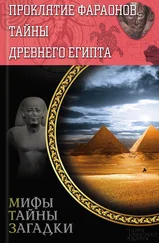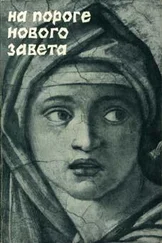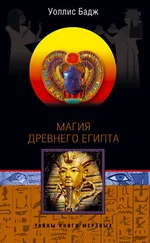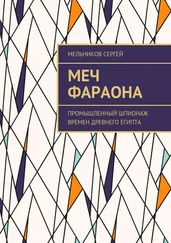Reeves, 1990. P. 275.
Reeves, Wilkinson, 1996. P. 191.
Дату «лето 1871 года» независимо друг от друга упоминали трое братьев Абд эр-Расул, и именно этот период чаще всего приводят в египтологической литературе. Однако предлагались и другие даты, в том числе даже 1859 год. Bickerstaffe D. History of the discovery of the cache // Graefe E. The Royal Cache TT 320: a re-examination. Cairo, 2010. P. 32–36.
Bickerstaffe, 2010. P. 14–15.
Bickerstaffe, 2010. P. 16–17.
The Royal Cache TT 320: a re-examination / E. Graefe, Belova G. (eds.). Cairo, 2010. Plans 02–06.
Graefe, Belova, 2010. Plan 08.
Bickerstaffe, 2010. P. 21.
Цит. по: Bickerstaffe, 2010. P. 19.
Bickerstaffe, 2010. P. 22.
Находится в свободном доступе в интернет-архиве [Electronic resource]. URL: archive.org/details/The_Night_of_Counting_the_Years(аccessed: 18.05.2018).
Bickerstaffe, 2010. P. 23.
Полный список приведен в книге: Reeves, Wilkinson, 1996. P. 196.
Reeves, Wilkinson, 1996. P. 195.
Reeves, 1990. P. 277.
Taylor J. H. Intrusive Burials and Caches // The Oxford Handbook of the Valley of the Kings / R. Wilkinson, K. Weeks (eds.). New York, 2016. Location 7856.
Reeves, 1990. P. 277; Taylor, 2016. Location 7860.
Taylor, 2016. Location 7881.
Taylor, 2016. Location 7881.
Bickerstaffe, 2010. P. 21.
Taylor, 2016. Location 7903.
Romer J. Ancient Lives. The Story of the Pharaohs’ Tombmakers. London, 1984. P. 196–197.
Carter H., Mace A. The Tomb of Tut-Ankh-Amen. Vol. I. London; New York; Toronto; Melbourne, 1923. P. 79.
Carter, Mace, 1923. P. 80.
Carter H. A Tomb Prepared for Queen Hatshepsut and Other Recent Discoveries in Thebes // Journal of Egyptian Archaeology. 1917. № 4. P. 115.
James, 1992. P. 187.
Carter, 1917. P. 107–108.
Litherland P. The Western Wadis of the Theban Necropolis. London, 2014. P. 21.
Carter, 1917. P. 108. В 1921 году Эмиль Бараиз опубликовал отчет об открытии еще одной скальной гробницы в этом районе (Baraize E. Rapport sur la decouverte d’un tombeau de la XVIIIe dynastie a Sikket Taqet Zayed // Annales du Service des Antiquités de l’Egypte. 1921. № 21. P. 183–187), которой теперь присвоили его имя.
Carter, 1917. P. 109.
Topographical Bibliography of Ancient Egyptian Hieroglyphic Texts, Reliefs and Paintings I.2. P. 591–592. См. также Lilyquist C. The Tomb of Tuthmosis III’s Foreign Wives. New York, 2004.
Romer, 1984. P. 197.
Carter, 1917. P. 110–111.
Carter, 1917. P. 111.
Carter, 1917. P. 109–110.
Carter, 1917. P. 107.
Peden A. J. The Graffiti of Pharaonic Egypt. Scope and Roles of Informal Writings (c. 3100–32 BC). Leiden, 2001. P. 232.
Romer, 1984. P. 197.
Romer, 1984. P. 197.
Romer, 1984. P. 197.
Romer, 1984. P. 199.
Carter, 1917. P. 111.
Romer, 1984. P. x, 198.
Romer, 1984. P. 196.
Peden A. J. Egyptian Historical Inscriptions of the Twentieth Dynasty. Uppsala, 1994. P. 279.
Reeves, 1990. P. 130.
Litherland, 2014. P. 56.
Литерланд подчеркивает, что эти надписи приняли форму знаков, которые были интерпретированы как знаки гробниц, но не предлагает альтернативного объяснения: Litherland, 2014. P. 24.
Litherland, 2014. P. 57.
Litherland, 2014. P. 58.
Litherland, 2014. P. 59. Он рассматривает вади А, C и D в качестве наиболее вероятного местонахождения гробниц.
Carter, 1917. P. 111–112.
Litherland, 2014. P. 73–80.
Reeves, 1990. P. 277.
Taylor J. H. Aspects of the History of the Valley of Kings in the Third Intermediate Period // After Tutankhamun. Research and excavation in the Royal Necropolis at Thebes / N. Reeves (ed.). London; New York, 1992. P. 202–203.
Graefe and Belova, 2010. P. 46.
Graefe and Belova, 2010. P. 50–52.
Eggebrecht A. Roemer- und Pelizaeus Museum. Hildesheim, 1993. P. 76.
Aston D. A. Royal Burials at Thebes during the First Millennium BC // Thebes in the First Millennium BC / E. Pischikova, J. Budka, K. Griffin (eds.). Cambridge, 2014. P. 46.
Упоминалось в лекции, прочитанной в Национальном музее археологии Испании в Мадриде в октябре 2016 года, которая доступна онлайн: youtu.be/i9y1SiRUXY(дата обращения: 18.05.2018).
Niwinski, 2007. P. 1396.
Niwinski, 2007. P. 1396.
Он ошибался в обоих случаях (хотя и оставался убежденным в том, что ведет раскопки Пер-Рамзеса, до самой смерти): археологические исследования, проведенные австрийскими учеными в Тель-эд-Дабе в 1960-х годах, подтвердили, что там когда-то находился Аварис, а местонахождением Пер-Рамзеса теперь признан Кантир.
Читать дальше
Конец ознакомительного отрывка
Купить книгу
![Крис Нонтон В поисках гробниц Древнего Египта [Тайны Нефертити, Александра Македонского, Клеопатры] обложка книги](/books/395294/kris-nonton-v-poiskah-grobnic-drevnego-egipta-taj-cover.webp)










